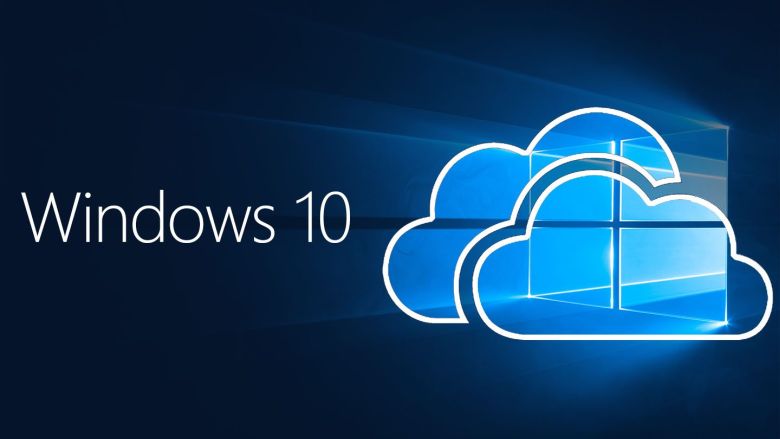About two weeks ago, we reported that Microsoft would likely cut its license rates for OEMs that wanted Windows 10 on their device. Earlier this week, Twitter user ‘WalkingCat’ (@h0x0d) spotted the name ‘Cloud’ in a list of Windows 10 versions. Presumably, somewhere in Microsoftland there’s a version of the OS with the name Windows 10 Cloud on it.
.@bdsams @tfwboredom first saw it in SDK 15003 pic.twitter.com/kO2bey6Ofy
— WalkingCat (@h0x0d) January 29, 2017
According to a report in ZDNet:
“Windows 10 Cloud is a simplified version of Windows 10 that will be able to run only Unified Windows Platform (UWP) apps installed from the Windows Store.”
Windows 10 Cloud is essentially a lighter version of Windows 10 specifically for low-cost, low-specced devices. We’re thinking those devices could be 14.1-inch-and-under notebook PCs that Microsoft wanted to license Windows 10 to, for a cut rate. See the article linked below:
Microsoft to Cut Windows 10 License Rates for Notebook Manufacturers
To pull on that thread a little more, it’s definitely possible that at least one version of Windows 10 is being streamlined to handle lower specced devices, such as low-cost notebooks.
That makes sense for three reasons.
First of all, Windows 10 is a resource-intensive operating system, which could pose a problem for notebooks with modest specs. If Microsoft were to strip it down to its essentials as Windows 10 Cloud, it would make for a better fit.
Second, not many people would try and do serious 3D work or pro gaming on a notebook, leave alone try to run graphics-intensive applications like holographics or VR. The full Windows 10 in such a scenario (even if it were a high-specs notebook, for example) would be overkill, to say the least.
Third, why would Microsoft be willing to cut license pricing for makers of notebooks and still provide full functionality? From that standpoint, Windows 10 Cloud makes even more sense. Microsoft can offer a faster experience and a growing list of UWP apps, yet make money in a new segment of the notebook market by offering a Windows-based solution at a cheaper price.
This third reason I’ve outlined above is intriguing, because it opens up a brand new opportunity to pre-empt the growth of Chromebooks running Google Chrome OS. This alone could be Microsoft’s motivation to enter this market segment and promote a Windows device family that thrives solely on UWP apps.
Some might see it as a big mistake, but if Windows 10 Cloud can help notebook makers offer a Windows device for the price of a Chromebook – or less – then why not?
What’s more, existing or new iOS and Android apps can easily be bridged to Windows 10 via the Universal Windows Platform, which could effectively bring in a steady stream of well-loved apps from iOS and Android to the growing UWP app store.
What we think is going on here is that Microsoft may be trying to promote UWP apps in a roundabout way.
Let me elaborate on that.
By encouraging notebook makers to accept a lighter and cheaper version of Windows 10, and restricting those devices to exclusively running UWP apps, they’re enticing developers with a new market opportunity. More users means more potential downloads and in-app purchases; hence, more money for the developer.
Essentially, is the old ‘more-users-means-more-developers-means-more-apps’ formula that made iOS and Android the kings of mobile OS.
But why? Why would Microsoft want to build a large body of UWP app for their app store?
When you think about it, that was the missing piece of the puzzle in Microsoft’s first attempt at going mobile. It was primarily the lack of apps – and a limited choice of devices – that caused the downfall of Windows Phone. Apple had “premium” and Android had “popular”, but Microsoft had neither.
Which is why they set up UWP and purchased dev platform Xamarin and created synergies between the two.
“Xamarin is the only platform with complete API coverage and deep code-sharing capabilities across iOS, Android and Windows apps, for a total of 2.6 billion devices you can reach in C#. Anything you can do in Objective-C and Java can be done in C# with Xamarin.” – from Xamarin FAQs
It’s all part of Nadella’s strategy (we presume) to get Windows 10 into the mainstream mobile space. And if that means playing the game by Google’s rules or Apple’s rules, then so be it.
By leveraging Windows 10 (or Windows 10 Cloud) to create a strong user base on cheaper notebooks, Microsoft knows that the UWP apps will naturally follow. Because developers go where the people are.
Now, this entire argument is based on the fact that there will be a Windows 10 Cloud coming out sometime this year. But even if ZDNet’s assertion turns out to be a false alarm, the very act of cutting the pricing on Windows 10 licenses to OEMs will still help Microsoft achieve the goal of getting that huge user base within the low-cost notebook segment. If both happen, then all the better for them.
That’s where we think this is headed. A lot of it is being “educated-guessed”, but the signs are unmistakable. Microsoft must have a solid body of UWP apps before it can compete with Apple or Google in the mobile space, and this could be their way of getting the job done.
Thanks for reading our work! Please bookmark 1redDrop.com to keep tabs on the hottest, most happening tech and business news from around the world. On Apple News, please favorite the 1redDrop channel to get us in your news feed.



